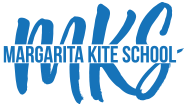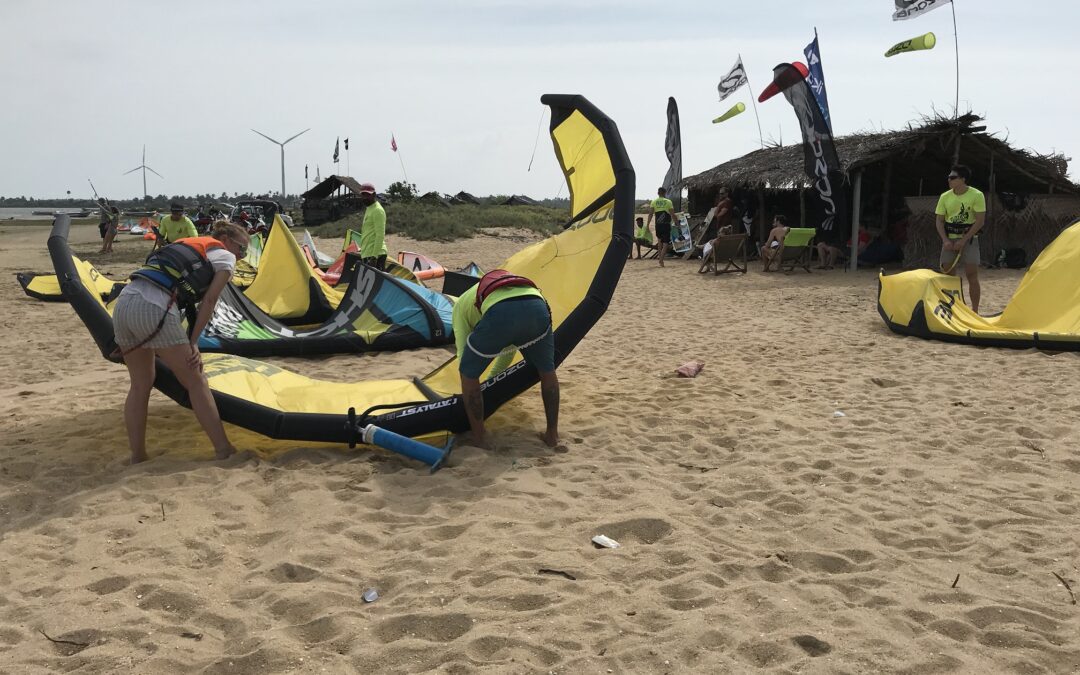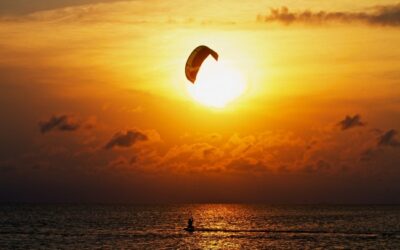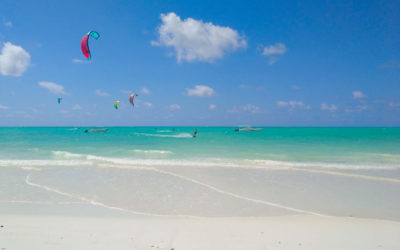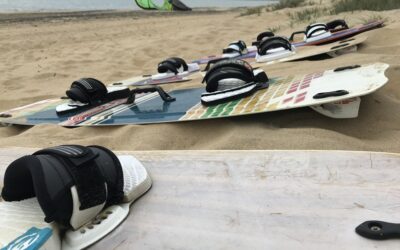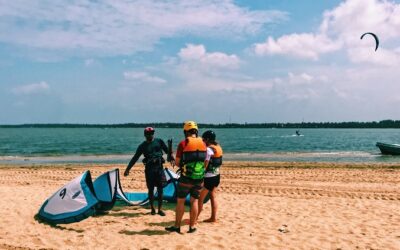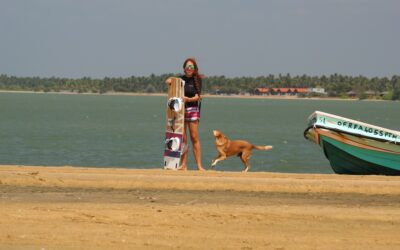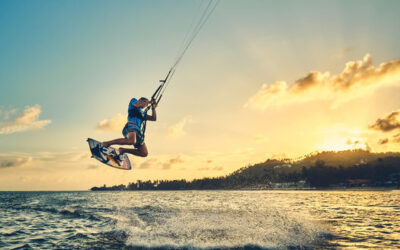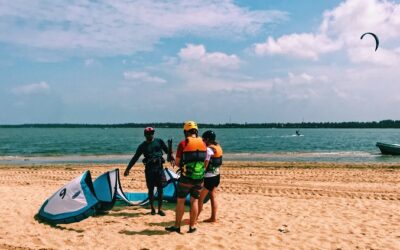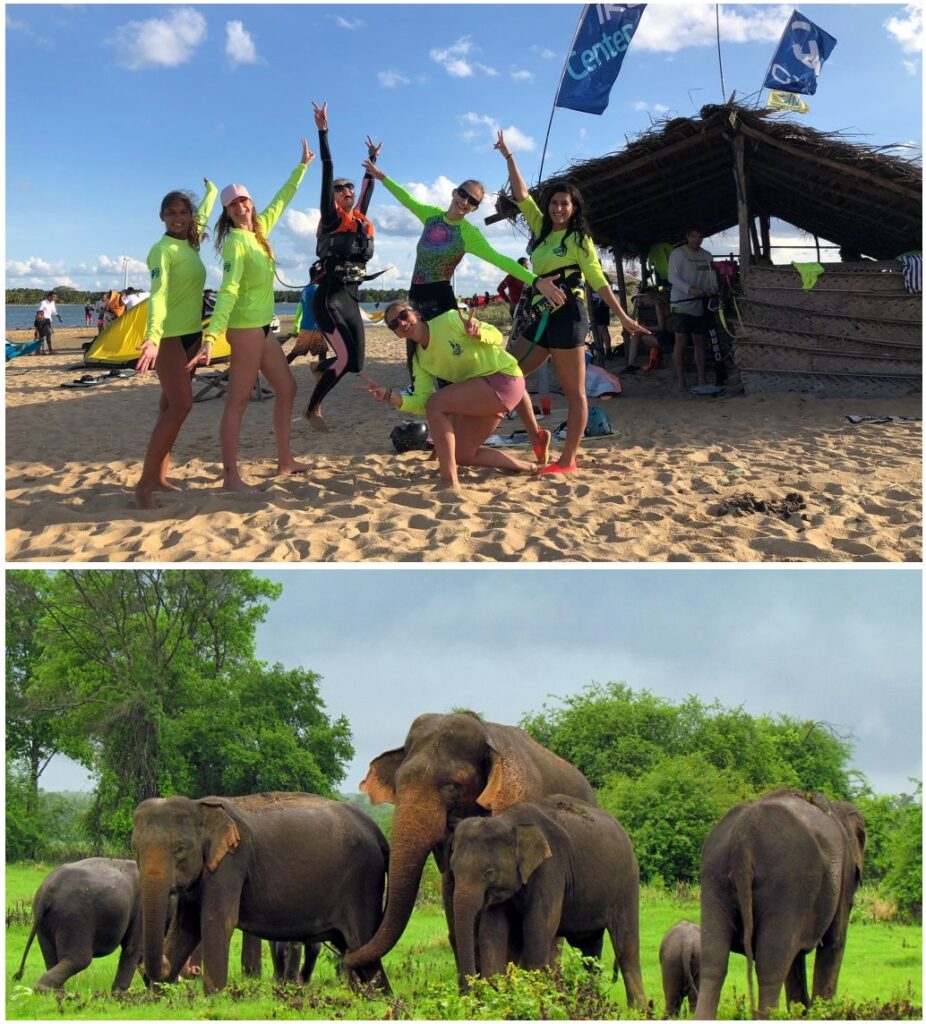The most suitable kites for beginners to get started
Kitesurfing for beginners can prove to be an intimidating experience. Kiteboarding is an exhilarating and dynamic sport that requires an endless amount of skills and tricks to learn which at times becomes quite challenging and daring. There is a lot to explore, and so much to understand that it gets a bit overwhelming for the learner. Contrary to what many people believe, choosing, and getting the right kite to learn kiteboarding is not a child’s play. If you are an amateur, it’s always recommended to choose the most suitable kite equipment to kitesurf easily and proficiently.
While the overall feeling is that of excitement and happiness, every new learner experience a billion questions circling in their head. Should I buy the kite equipment or should I rent it? Should I purchase a new kite or avail a used one? But the ultimate significant question that every learner needs to cater to is ‘What type of kite you should start with as a beginner?’
The purpose of this blog is to educate people with all the technical knowledge that one requires to kitesurf adeptly. We will help you in getting further insights on the optimal pieces of equipment that enable kite surfers to ride with the wind and defy the elements. Kitesurfing is not possible without accurate kitesurfing equipment. Let’s shed some light on the essential features of a beginner’s kite.
What are the TOP features of beginners’ kites?
The most important stage is to choose the best possible beginner kite that will help you develop your riding and flying skills and ideally serve you the best as you progress.
Top features that should have a beginners´ kite:
EASY RELAUNCH + GOOD STABILITY + MUCH DEPOWER + LARGE WIND RANGE
As a newbie, you are more likely to crash your kite more frequently. So always choose the kite that is easier and quicker to relaunch in the water and with less wind. Similarly, a kite should best provide you with a constant pull when flying so that you are likely to crash less.
Needless to say, safety should be your first concern as a beginner. Make sure that your kite has a good depower ability to stop you from drifting or lifting when you push out or let go of your control bar, especially in stronger winds.
As a beginner, you’ll initially own a single kite or two. So always, choose the kite that supports a broad range of wind to be able to ride in a variety of wind conditions at your chosen spot.
We recommend beginners to get started with Delta or Hybrid Kite.
The Delta kite is characterized as a D-shape, normally short and fat and is incredibly easy to relaunch, and works best in a wide range of winds. They possess a good depowering potential, supports the auto relaunch feature, and are potentially safe for beginners.
Having said that, the hybrid kite also has good depowering potential, supports good wind range, capable of auto relaunch, and is safe for beginners.
Moving forward, we would like to enlighten you to choose the best kite as a beginner and the most suitable kite equipment for you. Through this guide, we’ll also try to cater to your questions regarding the most appropriate kite for beginners.
The best kitesurfing spots in the world
"From Asia to America, from East to West. Explore some of the world's finest kitesurfing spots. And, no sharks!" Maybe you’ve been kitesurfing for a while, and want to try exciting new waters? Holidays to famous kitesurfing destinations around the world is all part of...
The ultimate guide with the top kitesurfing spots in Asia
If there’s one sport that can enthral your senses and make you feel more attached to the beautiful nature, it’s kitesurfing. The kitesurfing community is moving towards a new goldmine for surfing. Asia, though underrated, is home to some of the best kitesurfing spots....
The ultimate guide with the top flatwater kitesurfing destinations
Best places in the world to kite in flat water Be it surfing over the clearest of waters or performing gravity-defying stunts near the dock, kitesurfing, and its adrenaline boost is unrivalled. A passionate alliance of wind and water, kitesurfing provides...
The ultimate guide with the top kitesurfing destinations to learn kitesurf
Best Places to Learn to Kitesurf There are not many things in this world that can give the same adrenaline rush, as the exhilarating experience of kitesurfing. Harnessing the wind’s power to glide across the water surface, and be lifted high into the sky, is...
A Practical Guide to help you to buy your first kitesurf equipment if you are a beginner
Once when you are sure to practice the sport on the field finally, you ask yourself now what? Rent kitesurfing equipment or purchase it?
At this point when you are beginning to learn a new sport, we don’t recommend you to use rented equipment due to the lack of guarantee that it brings with itself and is potentially prone to risks. What may start as a great kitesurfing day could end up being not as good as it was planned. Therefore, it is better not to risk it.
Rentals normally work best in cases when you travel and do not want to carry your equipment or you plan on kitesurfing occasionally. Therefore, it is always the best decision to buy yourself a new equipment and be independent with it.
We would now like to give you top recommendations to buy kite equipment for beginners.
Top recommendations to buy kite equipment for beginners:
Before buying your first kitesurf equipment, you need to be clear on two basic questions:
> Where will you kite the most often?
> What are the wind conditions usually there?
To the first question, you already have the answer, and for the second question, it’s always good to ask around on different social media platforms or from a community of kitesurfers, your friends, etc. Meanwhile, the internet is one potential source with a lot of information online.
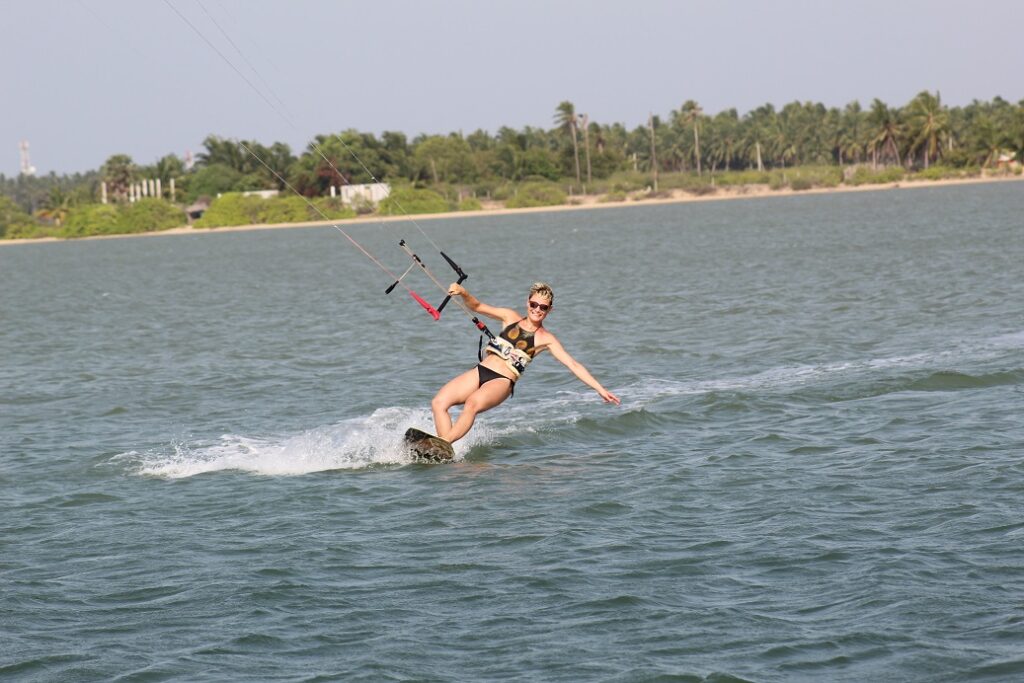
What are the best kites on the market to learn to kitesurf?
What are the best kites on the market to learn to kitesurf?
One important factor to consider while you purchase the kite equipment is to know the wind conditions in your home spot to determine what kite measurements you need to kitesurf smartly. In general, to cover the entire navigable wind range for beginners, you will need a pair of kites, one “large” for weaker winds, and one “small” for stronger winds.
Anyways, choosing a smaller or larger pair of kites is secondary to deciding whether you want to buy a new, semi-used, or used kitesurfing equipment. So, let’s elucidate on the pros and cons of buying a new, semi-used, or used kite equipment.
How much does kitesurfing equipment cost?
For many people who are new to kitesurfing and want to learn, a commonly asked question is how much kitesurfing gear costs. However, the answer to this question is not a straightforward one - The price of kitesurfing equipment varies between items and even between...
Kite gear maintenance: best practices for a long life of your kitesurfing equipment
Have you just started in the sport and still don't know very well how to keep your kitesurfing equipment in the best conditions? Your Kitesurfing equipment is very important, and if you love it and you want it to last for a long time, you must maintain it in the best...
The ultimate guide to beginner kitesurfing boards
Have you finished your kite course and you don't know which initiation board is the most suitable for beginners? In this post, we will help you to choose the best beginners kitesurfing boards and the ones which you can progress faster. There is always a hard time in...
Three options you have when we talk about buying the best kite for beginners
1st Option – Buy new equipment to learn to kitesurf
Buying new material is always a safe investment. You will have a new kite with a long life ahead. Also, you can still take care of it in the way you think is appropriate, and you can save yourself disgust with warranty problems (you can have a 2-year warranty) or a dishonest seller. Moreover, you will always have the option of selling it again for a reasonable price if you want to change your kite and get back a good part of the investment.
The downside is the price, which tends to be high for leading brands, and, as we always say if you break something new at first, it will hurt a lot more than if you buy something used and cheap.
Recommendation: If you plan to buy new kites and start learning to kitesurf, the best option is to buy from previous seasons. For example, most brands launch their recent seasons around July / August, and you can always find new material deals from the same season or the past at a discount of between 25% and 50%.
Prices: On the best brands, you can expect to spend between € 1,000 and € 1,900 on kites and bars.
2nd option: Buying Semi-new equipment to learn kite
The second option that we put on stage is to buy semi-new kite equipment. By semi-new equipment, we mean kites of the current year or last year with very little use. You will get to find such kites in the second-hand market as many people sell their kites due to lack of time or renew them for the new season kites. If you search well, you will find incredible deals on almost new equipment for much less. Also, you can always negotiate and get it even at a better price!
The negative part is that you have to deal with people you do not know, and they may be dishonest by selling kite equipment with some hidden defect (especially if you do not have much experience yet). Usually, we recommend you to go with professionals or with someone with prior selling experience in buying the equipment.
Recommendation: The best time to buy semi-used kite equipment in excellent condition and reasonable price is between July and September. All the new equipment has started to go on sale, and people are looking to renew their equipment.
Prices: In top brands, you can find prices for semi-new kitesurf kites between € 600 and € 1000.
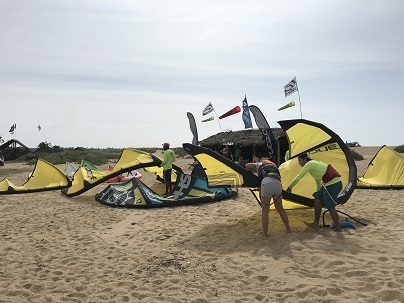
3rd option: Buy second-hand used kitesurfing equipment
The last option you have is to buy the used equipment. A used kitesurf equipment is the best option for people who are still not 100% convinced whether this is their sport. Also, this is the right choice for people that can kite occasionally or rarely.
In the second-hand kitesurfing market, you can find many kites of past years with old models and conditions. For that reason, you will find kites with repairs and pores. Don’t worry, if the repair is OK and the pores are clogged, you will still have a kite for a long time.
The negative part is that if you buy something used, there’s a high probability that you’ll encounter problems in long run. Hence, from time to time, you should check that there are no leaking valves, especially every time before you go for a kite trip. After all, you don’t want to end up crying in the Caribbean with a leaking kite.
Prices: It will depend on the year of the kite, its use, and repairs. But in this case, the costs can range from € 200 to € 600.
All this considered, when it comes to whether to buy a new, a semi-new, or used kitesurfing equipment if you are a passionate beginner, it is better that you buy a new kite from the last season (if you can afford it). In case you go for the option to buy a used kite, here we give you some tips:
So far, you have an idea about the differences between buying new or second-hand equipment to learn kite. But yet, the question is still in your head: Should I buy an old kite or a new kite?
Well, that too depends on your affordability level. If you can afford it, as we have remarked before, it is a good idea to buy new equipment. You will be the first one to release its security systems, and you will know that the lines are new, and the valves are in good condition too. But in case you are short on finances or you have other financial priorities, we recommend you to go for a used kite.
Here we present some of our recommendations in case you decide to buy a used kite.
What should we review when we buy a used kitesurfing kite?
When purchasing a used kite, it is crucial to look at the trailing edge (the rear part of the kite), especially in the central area since this is where the kite suffers the most over time.
Another aspect to check is that the seams are in good condition as it is essential for a sturdy kite. If the seam is not straight, the tension will not be divided equally and it will tear at the points where the seam gets out of line. It is also crucial to check the state of the kite’s bridles and, above all, the area where the pulleys work (if any) since it can be overused and break while flying!
If you have a repaired kite, it may bring the price down a fair bit but is it good to fly? So, it’s important to note that everything is well sewn and without folds or strange marks.
Kite bladder leakage is the number one cause of headaches among kiteboarders.
Hence make sure that the kite does not lose air. For this, you have to inflate it very hard and leave it in a large pool of water for a while. You’ll be able to find the leakage by looking for small air bubbles coming from a strut. This way you can detect the detached valve or any small puncture. Replacing a valve or repairing a small hole is very easy and cheap to do (a professional will charge you around € 20), but if it is the valve that fails, think that soon the others will also fail.
On the other hand, DO NOT purchase any kite model before 2010 because there occurred drastic changes in the security systems.
Now that you already know the differences between new and used kites, let’s see what kind of kites you can use when you are on your first steps of kitesurfing! Down here, we help you to find the most appropriate kite for beginners.
The best kite for beginners to learn kiteboarding
So far, we have discussed buying a new kite or a second-hand kite. No matter your choice, it is time to see what options do you have when we talk about the type of kites.
Obviously, in the beginning, you can be a little bit confused as you will various types of kites in the market. You’ll spot kites for varying disciplines like kites for lighter winds, kites for strong winds, kites used in water or snow, etc.
In short, there are several factors to take into account when we talk about choosing the best kite to learn to kitesurf…
Firstly, let’s start with the types of kites regarding their shape.
Types of kites that you can buy according to their shape
C shape kites
The C shaped kites are the oldest inflatable kite. They are not advisable for beginners because they generate o lot of power and lift by accumulating the most air. It’s normally suitable for people who are pro at kitesurfing. However, if you are on your first steps of kitesurfing and you want to learn kite properly with a friendly kite for beginners, forget about them.
Bow type (flat)
Bow kites are perfect kites to learn to kitesurf as they accumulate less air and can easily be depowered due to their bridle pulley system. They also provide excellent upwind performance and excel in light and strong winds which justifies the fact they are frequently used in races and speed environments. However, its biggest drawback is that most brands stopped making them because of the delta boom.
Hybrid
Hybrid kites are very versatile as it offers the safety and depowering tools of a bow kite and the feel and powered turns of C-kites. The Hybrid Kite is a supported leading edge (SLE) kite because it has bridles attached to its leading edge.
Delta
A Delta kite is the best option if you do not find any bow kite in good condition. The deltas are the latest evolution of kites. With its D shaped short and fat profile, they are incredibly easy to relaunch and works best in a wide range of winds. If you want a friendly kite to learn to kitesurf, nowadays, the Delta kite is the best option in the market.
Foil
Do not look at them until you get used to kiting with one of the previous ones for a while.
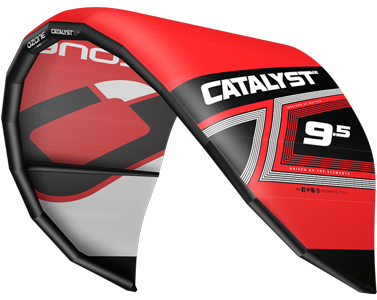
kite for beginners
What is the best kite for beginners?
It is the most crucial decision to make before you start learning to kitesurf. Without proper knowledge and some appropriate kite lessons, there is a high tendency to put yourself and those around you in danger. We recommend that you do the course with qualified instructors.
When buying the kite equipment, take guidance from experienced people, or be accompanied by a friend or acquaintance who practices kitesurfing. Having clarified this point, we can continue choosing kites.
1- Choosing a kite for its shape and construction
Foil, hybrid, flat, delta, or C ? which one do I buy ?
Your first option should be trying to get a bow kite. It is the slowest kite in the market, so you will have more reaction time to move it. Besides, its flat shape enables you to survive gusty wind conditions and provides excellent upwind performance. It is also supported with full depowering systems and is safe for beginners.
Since finding a bow kite second-hand in good condition is somewhat complicated, you can go for a delta kite. It is the most sold kite, and its market is enormous. It is easy to relaunch from the water and very versatile in all situations.
2- Choose according to the discipline of the kite( Race, wave, freeride)
In this case, we recommend buying the hardest kites on the market: the wave kites. These kites have certain key features that make them the best kites for beginners.
> Robust and strong – compared to most kites, far more Dacron reinforcement is used on many areas of a wave kite to enable it to survive a crash or tumble through the whitewash.
> Quick relaunch – if you drop your kite accidentally in the water you’ll need to get it back into the air quickly. This kite features an added volume in the wingtips and leading-edge that allows a faster and easier relaunch than most freeride or hybrid-C designs could.
> Drift and Stall resistance – the bridles and medium-low aspect design enable a good wave kite to cover a large wind range, with lots of depower and will drift backwards while you ride a wave without stalling and falling from the sky.
When we talk about learning to kite, choosing a kite for waves is obvious; almost all of them are OK to be swallowed by a wave and resist it in one piece. Although you find on the second-hand market a freeride kite at a fair price and close to your house, go for it. It is also a good option.
3- Choose and buy your kitesurf kite according to your kiting area and your weight
Ask which knots are repeated the most times throughout the year. Then weigh yourself and look at this table.
The following table is indicative of winds of 13 to 17 knots.
| Size | Weight |
| 9 to 10m | 50 to 60kg |
| 11 to 12m | 60 to 70kg |
| 12 to 14m | 70 to 80kg |
| 14 to 16m | 80 to 90kg |
If there are more than 17 knots, which is already an excellent wind to have enough fun, you will go down one position on the size scale, and if there are more than 22 knots, we will go down two places. That is to say, with more than 17 knots, those of 70 to 80 kilos will ride 11 and 12 meters, and from 22 knots, they will go to 9 meters. Advice for beginners: it is better to ride a small kite rather than a large one.
To start, we recommend you to buy a small kite, that is, for a person of about 75 kg and wind between 18 and 20 knots, no more than 9 meters. It is preferable not to carry a lot of power in your first days.
All this leads us to the conclusion as we have remarked at the beginning of having to carry two kites, which over time and if you like this sport, will be a mandatory step to do. To give you an idea, a good kite pack would be three kites pack, depending on whether you move through many different kite spots, you want to kite in the winter season, or if you are one of those who always want to kite no matters any wind conditions.

Friendly kites & friendly spot to lean
Conclusion: Top TIPS when buying a kite for beginners
When entering into a sport with as much inherent risk as kiteboarding, it just makes sense to get the appropriate equipment. Just saving on a few hundred dollars isn’t worth the risk when you weigh it against your well-being, as well as those around you.
After the paradox and to summarize, you should look for the following:
- You can buy a Second-hand Bow kite or a Delta kite. A delta kite is a good option not only for its market and variety but also for the versatility and ease of relaunching from the water.
- Discipline: Wave or Freeride because of its reinforcements.
- Buy the exact kite size regarding your weight and the wind where you usually kite. If you want to learn safely, better you buy a kite according to the wind, rather than being overpowered.
- If you buy a second-hand kite, remember to go with someone who understands, a friend who is up in kitesurfing, or commit to someone you know to accompany you to buy the kite.
- Be sure that the kite is not older than 2010, and if you are taking a used one make sure that that it hardly has repaired.
- Finally, don’t buy a 5-line kite; look only for four lines. The 5th line usually slits the kite if it turns in the water.
In conclusion, the bow and delta kites are the best kites to learn to kitesurf, mainly because they are easy to relaunch, and they have a wide wind range. Furthermore, they have much stability in the air, making your life easy when riding your first steps.
Before buying a kite, it is better to inquire a lot and be annoying rather than choosing the wrong kite, since it can be the main reason for abandoning this wonderful sport.
The Top 10 kitesurfing tricks for beginners
A couple of weeks into your kitesurfing lessons, you feel confident. The adrenaline rush drives you to learn new tricks. The fancy unhooked tricks attract you, yet, is it advisable? A big ‘No.’ Don’t worry; we got you covered. In this article, we guide you through 10...
Kitesurfing for beginners
The ultimate guide to Kitesurf for beginners Are you thinking of starting a new challenge in your life by learning to kitesurf? Here we leave you the perfect guide for beginners: from choosing the right teacher to buying the equipment. If you are just...
